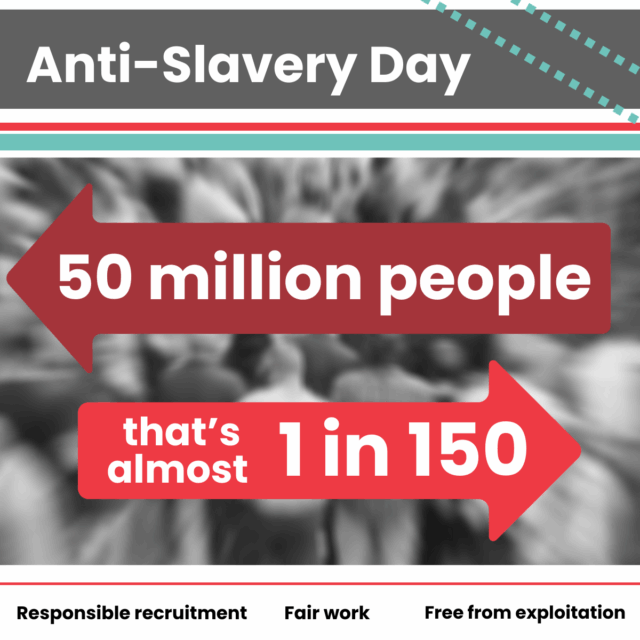
- Understanding workforce visibility in 2025
- The financial impact of workforce visibility gaps
- Key technologies enabling workforce visibility
- Transforming data into actionable insights
- Overcoming implementation challenges
- Real-time workforce management: Essential to cost control
- The ROI of investing in workforce visibility
- Future trends in workforce visibility for 2025 and beyond
- Practical steps to enhance workforce visibility today
- Streamline workforce management with Indeed Flex
Workforce visibility has become a key driver of financial performance, with organisations using data to optimise resource allocation and reduce unnecessary costs.
Understanding workforce visibility in 2025
Workforce visibility in 2025 is defined as the comprehensive, real-time understanding of all aspects of an organisation’s workforce — from who’s working, where, and when, to how much is being spent and how effectively work is performed. This concept has evolved rapidly in the digital age, moving beyond static spreadsheets and manual tracking to far more effective, technology-driven solutions.
Key components of workforce visibility
- Real-time monitoring: Immediate access to attendance, shift status, and workforce allocation across all departments and locations.
- Performance metrics: Tracking individual and team productivity, efficiency, and quality of output.
- Scheduling transparency: Clear, accessible schedules for both managers and staff, reducing confusion and last-minute changes.
- Payroll visibility: Up-to-date insights into wage costs, overtime, and compliance with pay regulations.
- Tracking source-of-hire: Ability to view the overall make-up of your workforce — whether in-house, agency, or external temps/contractors — and assess what’s working best for your business.
The degree of workforce visibility can vary significantly by industry and organisation size. For example, large retail and hospitality businesses often require granular oversight across multiple sites, while smaller firms may focus on streamlining scheduling and payroll. Importantly, the shift from reactive problem-solving to proactive workforce management is driven by enhanced visibility — organisations can now anticipate staffing needs, address potential issues before they escalate, and make data-driven decisions that directly support cost control.
The financial impact of workforce visibility gaps
Limited workforce visibility often results in hidden costs that eat into profit margins. These include unnecessary overtime and chronic understaffing or overstaffing. Without accurate, real-time data, businesses risk breaching compliance regulations, potentially incurring penalties or legal challenges.
Key financial risks associated with poor visibility
- Overtime costs: Lack of oversight can lead to excessive overtime spend, often unnoticed until payroll is processed.
- Understaffing and overstaffing: Inadequate visibility makes it difficult to match staffing levels to actual demand, increasing labour costs, the likelihood of staff burnout, and potentially harming customer service.
- Compliance risks: Inaccurate record-keeping or missed breaks can result in fines or reputational damage.
- Compounded inefficiencies: When visibility issues persist across multiple sites or departments, costs multiply quickly.
- No supplier accountability: If using various agencies to supply contingent staff, a lack of visibility makes it difficult to track supplier performance and associated costs.
A notable example comes from a major retail chain that achieved a 12% reduction in labour costs by implementing improved workforce visibility tools, as reported in Deloitte’s workforce analytics research. Similarly, McKinsey found that organisations using people analytics report significant productivity gains — demonstrating the tangible impact of closing visibility gaps (see McKinsey’s research on workforce analytics).
Key technologies enabling workforce visibility
The digital transformation of workforce management is powered by a suite of advanced technologies designed to provide both breadth and depth of insight.
- Advanced workforce management systems: These platforms centralise scheduling, time tracking, and payroll, making data accessible in real time.
- AI and machine learning: Predictive analytics can forecast demand, identify attendance risks, and recommend optimal staffing levels.
- Integration with financial systems: Seamless data flow between workforce and finance platforms ensures immediate visibility of labour spend in line with budget.
- Mobile solutions: On-the-go access to workforce data empowers managers and staff to respond quickly to changes.
Transforming data into actionable insights
Collecting data is just the first step — true value comes from transforming raw information into actionable workforce intelligence. Businesses must focus on the metrics that have the greatest impact on cost control, such as productivity rates, absenteeism patterns, and overtime trends.
Building actionable dashboards and KPIs
- Dashboards: Customisable dashboards can highlight cost-saving opportunities, such as shifts with persistent overtime or departments with high absenteeism.
- Key performance indicators (KPIs): Establish metrics that directly link workforce activity to financial goals — e.g. labour cost as a percentage of revenue, or shift fill rates.
Research from Harvard Business Review highlights that organisations embracing data-driven decision making are better positioned to identify and act on cost-saving opportunities, reinforcing the importance of turning workforce data into meaningful insights.
Overcoming implementation challenges
Improving workforce visibility is not without its hurdles. Common barriers include fragmented legacy systems, resistance to change, and concerns around data privacy.
Strategies to address common challenges
- Change management: Communicate the benefits of visibility to all stakeholders and provide training to encourage adoption.
- Phased implementation: Start with pilot programmes in high-impact areas before scaling across the organisation.
- Balancing privacy and transparency: Ensure that workforce data is collected and shared in compliance with privacy regulations, and communicate clearly with employees about data use.
For practical guidance on managing contingent workforces and overcoming these hurdles, see Indeed Flex’s resource on efficient contingent labour management.
Real-time workforce management: Essential to cost control
Real-time workforce management allows organisations to make immediate, informed decisions that prevent unnecessary costs. Instant visibility allows managers to spot and address scheduling gaps, overlaps, or unexpected absences before they impact service or budgets.
- Preventing costly scheduling gaps: Real-time alerts help avoid understaffing and the expensive need for last-minute hires.
- Optimising resource allocation: Dynamic reallocation of staff, based on live demand data ensures efficient use of resources.
- Reducing agency spend: By anticipating demand, organisations can minimise reliance on costly emergency staffing solutions.
And all of the above works, as highlighted by a hospitality business that adopted real-time workforce management tools and reported a 15% reduction in labour costs, as detailed in this case study on workforce analytics.
The ROI of investing in workforce visibility
Measuring the return on investment (ROI) for workforce visibility initiatives involves both direct and indirect benefits.
| Benefit | Description |
|---|---|
| Direct cost savings | Reduced overtime, optimised scheduling, and decreased agency spending |
| Indirect benefits | Higher employee satisfaction, lower turnover, and improved customer experience |
| ROI timeline | Most organisations begin to see measurable returns within 6-12 months of implementation |
The CIPD’s workforce planning research highlights that strategic workforce visibility supports both financial and operational objectives, making it a sound investment for forward-thinking businesses.
Future trends in workforce visibility for 2025 and beyond
The future of workforce visibility is all about integration, intelligence, and security. As organisations seek to gain a holistic view of their operations, workforce data will increasingly be combined with broader business intelligence for deeper insights.
- Predictive analytics: Anticipating workforce needs and costs before they arise, allowing for more strategic planning.
- Blockchain technology: Enhancing workforce credential verification and compliance tracking.
- Contingent workforce solutions: Specialised tools for managing temporary and flexible staff — a growing segment in many industries.
Practical steps to enhance workforce visibility today
Organisations looking to improve workforce visibility can take immediate action with a structured approach:
- Conduct a workforce visibility audit: Assess current systems, data flows, and pain points.
- Prioritise initiatives: Focus on areas with the greatest potential for cost savings or operational improvement.
- Select the right technology partners: Choose solutions that integrate seamlessly with existing systems and support real-time data access.
- Train managers: Equip leaders with the skills and tools needed to interpret and act on workforce data.
- Create a culture of transparency: Encourage open communication and data-driven decision making at all levels.
For real-world examples of how businesses have achieved these outcomes, explore the Indeed Flex client success stories.
Streamline workforce management with Indeed Flex
Discover how Indeed Flex can help your business reduce costs, improve operational efficiency, and achieve full visibility of your workforce. Take the first step towards smarter staffing solutions by requesting a demo today.








